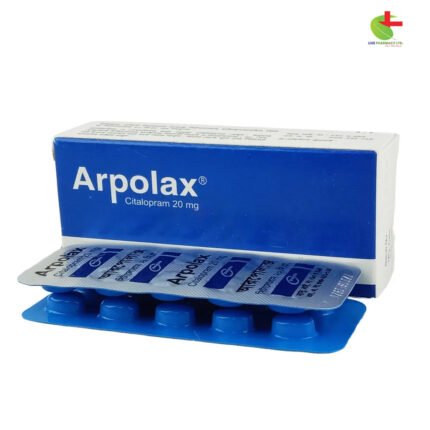Klarix 250
250.00৳ Strip
- Klarix is an effective antibiotic for treating bacterial infections such as chronic bronchitis, sinusitis, pneumonia, and skin infections.
- Its active ingredient, clarithromycin, inhibits bacterial protein synthesis, targeting a broad spectrum of Gram-positive and some Gram-negative bacteria.
- Suitable for adults and pediatric patients, Klarix also treats and prevents disseminated mycobacterial infections and manages Helicobacter pylori-related conditions.
- Always consult a registered healthcare professional before use.
 Brand
Brand
|
Incepta Pharmaceuticals Ltd |
|---|---|
 Generics
Generics
|
Clarithromycin |
 Type
Type
|
Tablet |
Indications
Klarix is utilized for treating:
- Acute bacterial exacerbations of chronic bronchitis in adults
- Acute maxillary sinusitis
- Community-acquired pneumonia
- Pharyngitis and tonsillitis
- Uncomplicated skin and skin structure infections
- Acute otitis media in children
- Treatment and prevention of disseminated mycobacterial infections
- Helicobacter pylori infections and duodenal ulcers in adults
Always use this medication under the supervision of a registered healthcare professional.
Pharmacology
Klarix contains clarithromycin, a bicyclic phthalane derivative that functions as a selective serotonin reuptake inhibitor (SSRI). It primarily works by inhibiting protein synthesis in susceptible bacteria by binding to the 50S subunit of the bacterial ribosome. Clarithromycin exhibits high efficacy against most Gram-positive bacteria, Chlamydia, some Gram-negative bacteria, and Mycoplasmas, often showing superior stability and effectiveness compared to erythromycin.
Dosage & Administration
Adults:
- Chronic bronchitis: 250 mg to 500 mg every 12 hours for 7 to 14 days.
- Maxillary sinusitis: 500 mg every 12 hours for 14 days.
- Community-acquired pneumonia: 250 mg every 12 hours for 7 to 14 days.
- Pharyngitis/Tonsillitis: 250 mg every 12 hours for 10 days.
- Skin infections: 250 mg every 12 hours for 7 to 14 days.
- Mycobacterium avium disease: 500 mg every 12 hours until low risk is established.
For H. pylori infection:
- Triple therapy (with lansoprazole and amoxicillin): 500 mg clarithromycin, 30 mg lansoprazole, and 1 g amoxicillin every 12 hours for 10-14 days.
- Dual therapy (with omeprazole): 500 mg clarithromycin every 8 hours and 40 mg omeprazole once daily for 14 days, followed by additional omeprazole as needed for ulcer healing.
Children:
Recommended dosage is 15 mg/kg/day divided every 12 hours for 10 days. For mycobacterial infections, use 7.5 mg/kg every 12 hours, up to 500 mg.
Note on renal and hepatic impairment:
Adjustments may be necessary for patients with severe renal impairment.
Interactions
Clarithromycin should not be co-administered with HMG-CoA reductase inhibitors, gastroprokinetic agents, ergot alkaloids, certain antipsychotics, and antiarrhythmics.
Contraindications
Avoid use in patients with known hypersensitivity to clarithromycin, erythromycin, or any macrolide antibacterial agents, as well as those with a history of cholestatic jaundice or hepatic dysfunction.
Side Effects
Common side effects include:
- Nausea, vomiting, diarrhea, abdominal pain
- Stomatitis, glossitis
- Headaches, allergic reactions
- Altered taste sensation, anxiety, dizziness, insomnia, hallucinations
Pregnancy & Lactation
Use with caution during pregnancy; benefits must outweigh risks. Clarithromycin is excreted in breast milk, so breastfeeding should be avoided during treatment.
Precautions & Warnings
Discontinue Klarix for severe hypersensitivity reactions. Avoid in patients with known QT prolongation or those on similar medications. Monitor for signs of hepatitis and evaluate for Clostridium difficile associated diarrhea if gastrointestinal symptoms arise.
Use in Special Populations
Klarix is effective for children over 6 months for various infections, but safety in those under 6 months is not established.
Overdose Effects
Overdose may lead to gastrointestinal symptoms. Supportive measures should be taken for adverse reactions, as Klarix levels are not significantly affected by dialysis.
Therapeutic Class
Macrolides
Storage Conditions
Store in a cool, dry place away from light and moisture. Use reconstituted suspension within 7 days at room temperature or 14 days if refrigerated. Keep out of reach of children.













Reviews
There are no reviews yet.